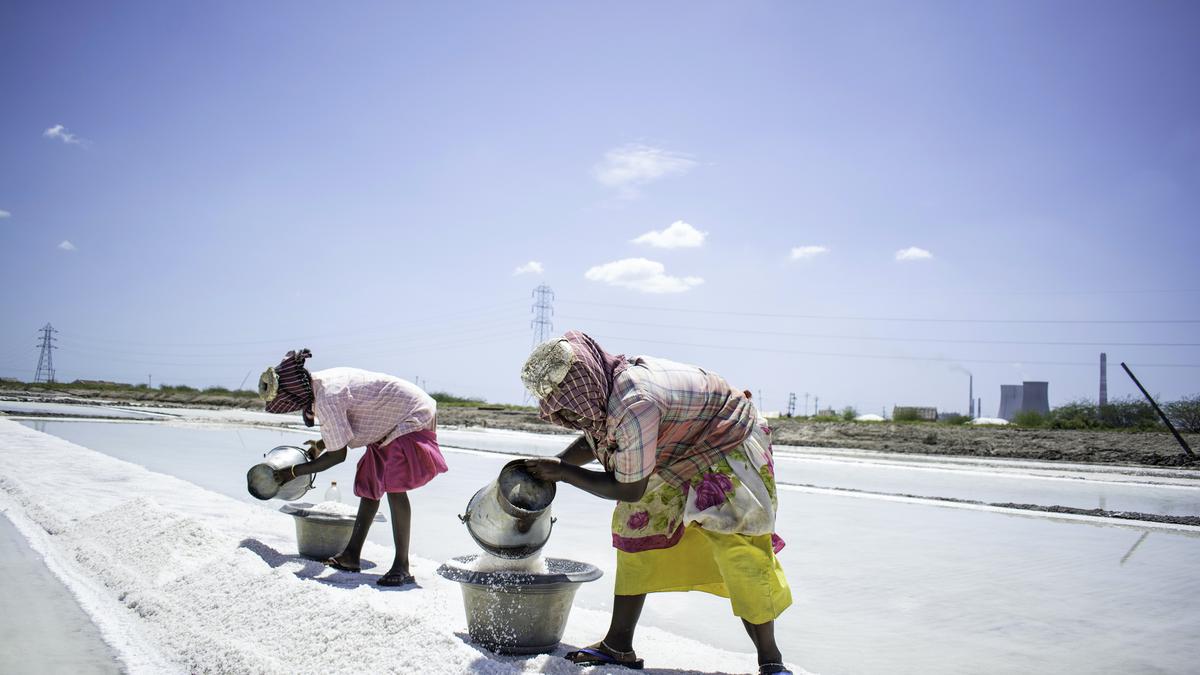
This exhibit on climate change at Chennai’s DakshinaChitra displays stories from People’s Archive of Rural India
The Hindu
This two day exhibit walks us through the complexities of climate change and its consequences
The two-month long Bhin Bhini: Changing Climate, Uncertain Livelihoods exhibit at DakshinaChitra’s Varija Gallery looks beyond the frames of its pictures and art installations.
Bhin Bhini meaning numerous is a name given to aggressive hybrid pests that ravage crops. The visual exhibit aims to unpack the convoluted way in which climate change affects livelihoods, the precarity it has brought; and no it is not just about melting icebergs and rising temperatures.
Krishnapriya CP, Chennai-based artist and cultural producer has carefully curated the exhibition which she calls a ‘living journal’ by borrowing heavily from the extensive People’s Archive of Rural India’s (PARI) stories on sustainability, livelihood and sustaining ecological systems. She has experimented with form, textures, scale and has taken liberties with light to make the exhibit a sensorial experience that triggers conscious thought.
Krishnapriya says that her aim was to “create stories by looking at the extensive PARI archive. I was not looking only at the notion of climate change. I was thinking about precarity, loss of livelihood practices , practices directly linked to climate change. For instance, artists, craft practices, and even inflation may not seem directly linked to climate change, but it is.“ With every image and art installation on display, the curator has aimed to break down the complexity of the subject by having a reading room, lessons on the jamakalam (rug) and a large collection of reading material provided by Foundation of Indian Contemporary Art (FICA), a Delhi based non-profit organisation.
The exhibit is also fostering lessons by collaborating with Marudham Farm School, an alternative school in Tiruvannamalai. As one enters the display, the bright and airy gallery is punctuated by the call of crickets. Only later do you realise that it does not come from the lush greens of DakshinaChitra, but from a pre-recorded tape installed in the gallery. This is how the exhibit blends seamlessly with the environment.
With haunting images from cyclone-hit Semmanjeri to Tamil Nadu’s chilli farmers, the cattle camps of Santara, damaged chillies that have turned white due to changing rain patterns, the looms of Onnupuram, and Karnataka’s hand pollinators are compelling images that make us pause.
What further drives home the message of the exhibit are installations by independent artists who feel strongly about climate change and are interested in agriculture. One such piece is the image of a human body crucified on to an agricultural tool used in manual agricultural practices. The piece by V Prabhu is placed in a dark room devoid of bright lights to move spectators out of their everyday physical and spatial spaces to be able to look differently at pieces such as this which warrant understanding and sensitivity.











